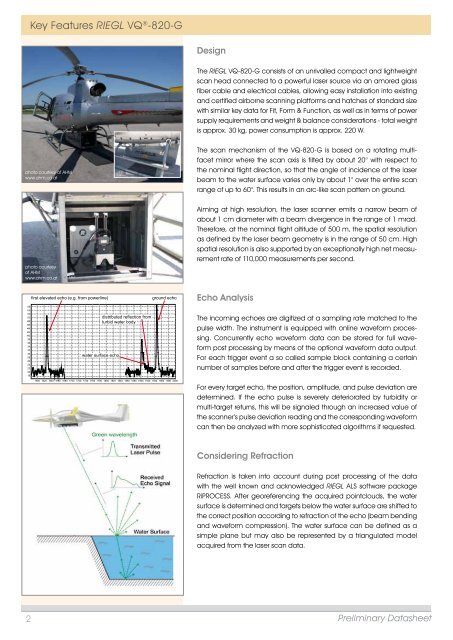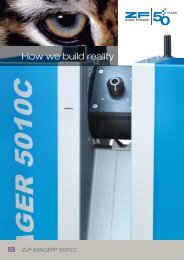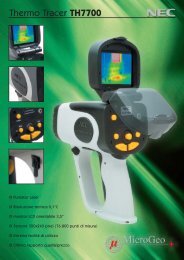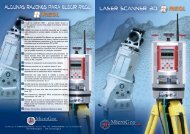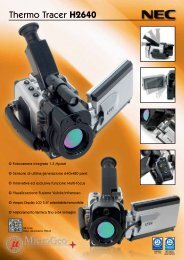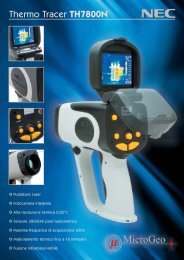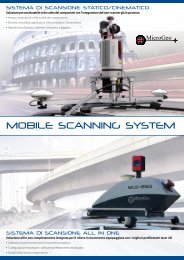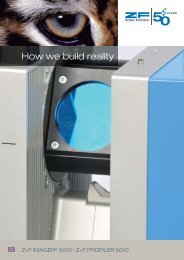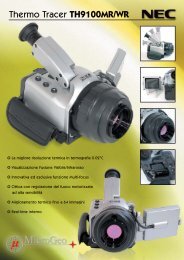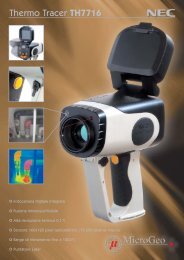RIEGL VQ-820-G
RIEGL VQ-820-G
RIEGL VQ-820-G
You also want an ePaper? Increase the reach of your titles
YUMPU automatically turns print PDFs into web optimized ePapers that Google loves.
Key Features <strong>RIEGL</strong> <strong>VQ</strong> ® -<strong>820</strong>-G<br />
Design<br />
The <strong>RIEGL</strong> <strong>VQ</strong>-<strong>820</strong>-G consists of an unrivalled compact and lightweight<br />
scan head connected to a powerful laser source via an amored glass<br />
fiber cable and electrical cables, allowing easy installation into existing<br />
and certified airborne scanning platforms and hatches of standard size<br />
with similar key data for Fit, Form & Function, as well as in terms of power<br />
supply requirements and weight & balance considerations - total weight<br />
is approx. 30 kg, power consumption is approx. 220 W.<br />
photo courtesy of AHM<br />
www.ahm.co.at<br />
The scan mechanism of the <strong>VQ</strong>-<strong>820</strong>-G is based on a rotating multifacet<br />
mirror where the scan axis is tilted by about 20° with respect to<br />
the nominal flight direction, so that the angle of incidence of the laser<br />
beam to the water surface varies only by about 1° over the entire scan<br />
range of up to 60°. This results in an arc-like scan pattern on ground.<br />
photo courtesy<br />
of AHM<br />
www.ahm.co.at<br />
Aiming at high resolution, the laser scanner emits a narrow beam of<br />
about 1 cm diameter with a beam divergence in the range of 1 mrad.<br />
Therefore, at the nominal flight altitude of 500 m, the spatial resolution<br />
as defined by the laser beam geometry is in the range of 50 cm. High<br />
spatial resolution is also supported by an exceptionally high net measurement<br />
rate of 110,000 measurements per second.<br />
Echo Analysis<br />
The incoming echoes are digitized at a sampling rate matched to the<br />
pulse width. The instrument is equipped with online waveform processing.<br />
Concurrently echo waveform data can be stored for full waveform<br />
post processing by means of the optional waveform data output.<br />
For each trigger event a so called sample block containing a certain<br />
number of samples before and after the trigger event is recorded.<br />
For every target echo, the position, amplitude, and pulse deviation are<br />
determined. If the echo pulse is severely deteriorated by turbidity or<br />
multi-target returns, this will be signaled through an increased value of<br />
the scanner’s pulse deviation reading and the corresponding waveform<br />
can then be analyzed with more sophisticated algorithms if requested.<br />
Considering Refraction<br />
Refraction is taken into account during post processing of the data<br />
with the well known and acknowledged <strong>RIEGL</strong> ALS software package<br />
RiPROCESS. After georeferencing the acquired pointclouds, the water<br />
surface is determined and targets below the water surface are shifted to<br />
the correct position according to refraction of the echo (beam bending<br />
and waveform compression). The water surface can be defined as a<br />
simple plane but may also be represented by a triangulated model<br />
acquired from the laser scan data.<br />
2 Preliminary Datasheet


